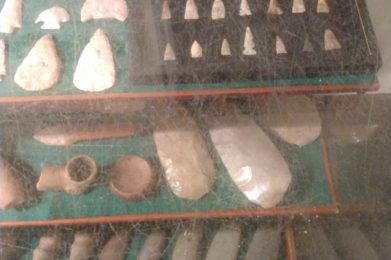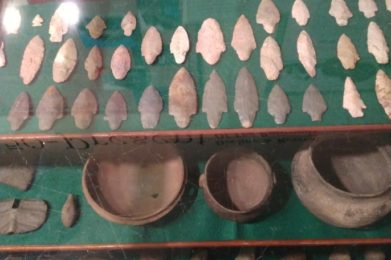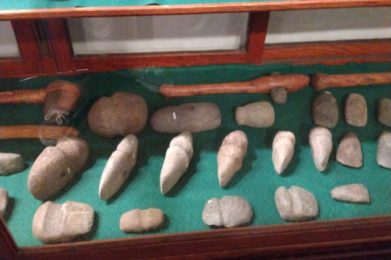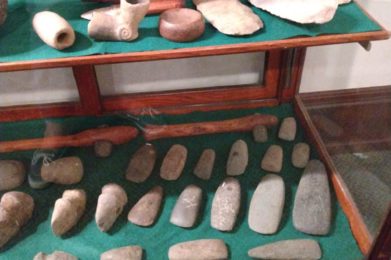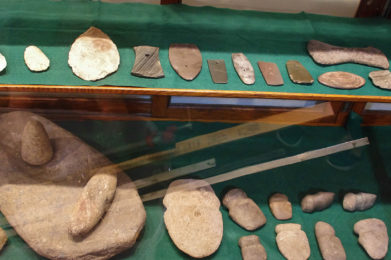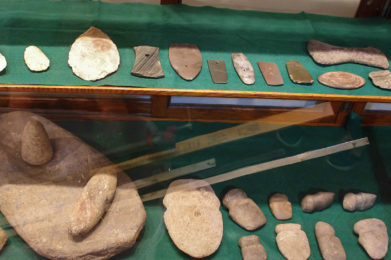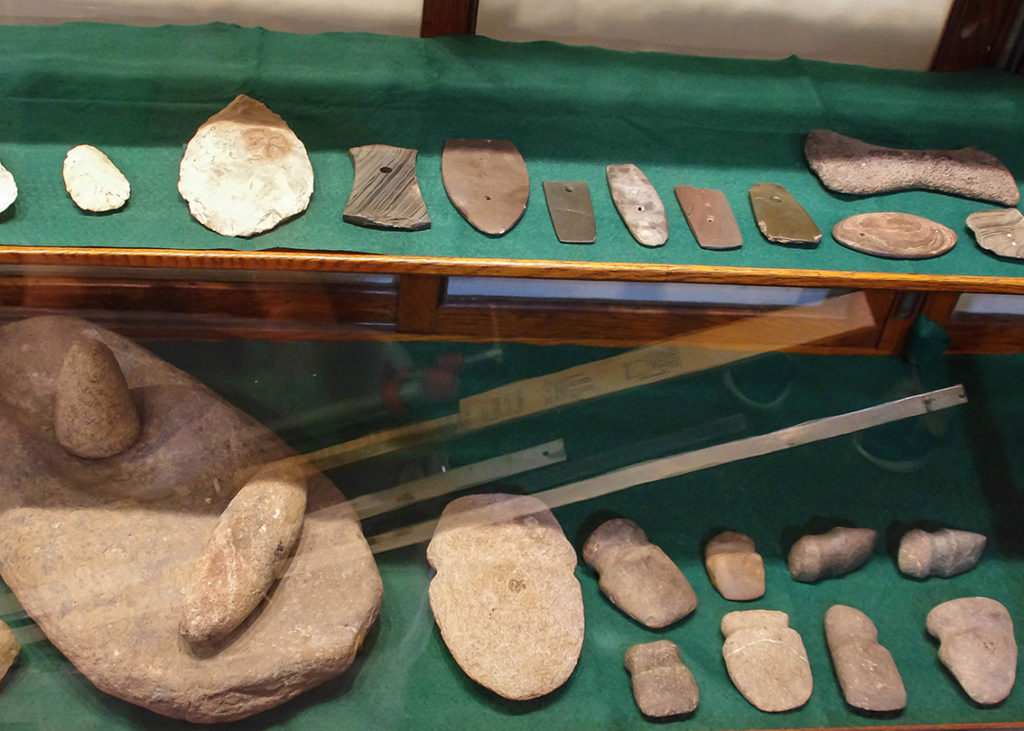
Indian Artifacts
7 Paleo and Early Archaic Lancelot points including a Clovis @ 11,000 BC it is the oldest piece in the collection.
Next are Early Archaic knives and points followed by several unhafted hand held knives.
The middle Archaic had a great diversity of points and Blades such as the pink Lancelot or Sedalia point on bottom row. Most late Archaic points were of the contracting stem type, collectors call Beavertails and were fairly similar; note the fondness for the Kentucky grey flint called Hornestone.
Early Woodland saw continued use of contracting stem types with some variations.
Middle Woodland saw the rise of the Hopewell people and the use of wide teardrop shaped point called Snyders and their preforms. Sometime after Hopewell the bow and arrow was developed and the Mississippian culture developed in 1000 AD to white contact.
In the small case are the only true Arrowpoints in collection.
Several flint Adzs start the 2nd row. These were used as wood working tools throughout prehistory and were mostly replaced with ground stone i.e. (the 2 modern hafted examples) in late archaic times.
Slate ornaments abound in the middle archaic to historic times. Several examples of pendants and gorgets are shown. The Butterfly Bannerstone is a charm or clan totem used on the atl-atl or spear throwing stick. The plummet or plumbob is considered a bola weight.
Mississippian pottery is known for its thin walled construction and many styles.
The Straight tube pipe of fine red sandstone is fairly rare and belongs to the time of the grey stemmed point on the top row.
The fired clay pipe is Mississippian and belongs with the triangle Arrowheads.
The red discoidal or chunky stone is Mississippian also, and was a game stone they rolled on the ground in competitions.
3 Mississippian hoes end up the row. Note the polish from being used in the soil.
Grinding stones were used throughout time and became more developed and abundant after the advent of corn growing sometime around 0 AD.
Full grove axes were the first in the progression of pecked and ground stone tools. They were followed by ¾ grooves (the ones that stand up). 2 examples of mawls or hammers are behind the ¾’s as well as recreations of how they were hafted. Grooved axes were followed by celts, splitting wedge shaped axes that were much easier to make and haft and were in use till historic times.
Cultural Periods and Dates
Paleo – 11,000 to 9,500 B.C.
Early Archaic – 9,500 to 7,500 B.C.
Middle Archaic – 7,500 to 3,500 B.C.
Late Archaic – 3,500 to 800 B.C.
Early Woodland – 800 to 250 B. C.
Middle Woodland – 250 B.C. to 350 A.D.
Mississippian – 1,000 to 1,650 A. D.
Historic Times – 1,650 to present time

